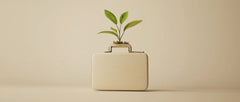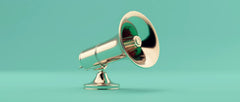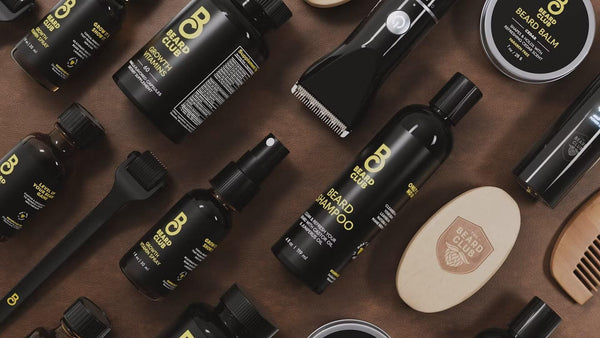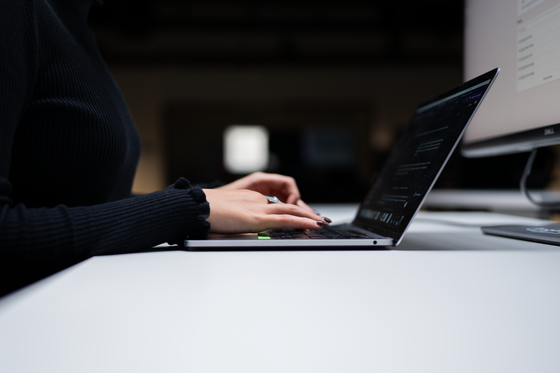L’Oréal’s Marketing Mastery: How a Global Beauty Giant Captivates Consumers Everywhere
Table of Contents
- Key Highlights
- Introduction
- The Power of Universalization
- Diversified Brand Portfolio
- Multi-Channel Marketing Approach
- Innovation and Science-Driven Strategies
- Embracing Sustainability and Social Responsibility
- Influencer and Celebrity Marketing
- FAQ
Key Highlights
- L’Oréal employs a strategy of “Universalization,” balancing global reach with local relevance in over 150 markets, and invests approximately $1 billion annually in research.
- With a diverse portfolio of 36 brands across four key segments, L’Oréal effectively attracts a wide range of consumers, from affordable to luxury products.
- The company leverages a multi-channel marketing approach, integrating traditional advertising with modern digital strategies, including partnerships with influencers and cutting-edge technology.
Introduction
In the competitive landscape of the beauty industry, L’Oréal stands out as a formidable leader, captivating consumers across the globe through a blend of innovative marketing strategies and a commitment to sustainability. With operations in over 150 countries, the French cosmetics giant has perfected the art of connecting with diverse audiences while maintaining a cohesive brand identity. This article delves into the key components of L’Oréal’s marketing strategy, highlighting its unique approach to product development, multi-channel engagement, and social responsibility that not only drives sales but also builds lasting consumer loyalty.
The Power of Universalization
L’Oréal’s marketing prowess is anchored in its concept of "Universalization." This strategy allows the brand to maintain a global presence while tailoring its offerings to local tastes and preferences. By employing localized marketing teams in various regions, L’Oréal develops products that resonate with the cultural nuances and beauty standards of each market. For instance, a skincare line designed for humid tropical climates will differ significantly from one aimed at dry, cold regions. This adaptability not only fosters consumer trust but also positions L’Oréal as a relatable brand, capable of meeting specific local needs.
The company's significant investment in research and development—approximately $1 billion annually—facilitates innovation and responsiveness to emerging trends. In 2022 alone, L’Oréal secured 517 new patents, showcasing its commitment to leading the industry with cutting-edge science and technology. This research-driven approach empowers L’Oréal to introduce products that align with shifting consumer preferences swiftly.
Diversified Brand Portfolio
L’Oréal’s ability to appeal to a broad audience stems from its diverse brand portfolio, which includes 36 brands categorized into four main divisions: Consumer Products, Luxe, Professional Products, and Dermatological Beauty. This segmentation allows L’Oréal to cover every aspect of the beauty market, catering to varying price points and consumer needs.
- Consumer Products Division: Brands like Maybelline and Garnier offer affordable beauty solutions that are easily accessible to the average shopper. These products are designed with the everyday consumer in mind, ensuring that quality and affordability coexist.
- Luxe Division: Catering to the premium market, L’Oréal Luxe features high-end brands such as Lancôme and Giorgio Armani. These products are often found in upscale department stores, targeting consumers who seek luxury and exclusivity.
- Professional Products Division: This segment supplies hair salons with professional-grade products, emphasizing quality and effectiveness for industry professionals.
- Dermatological Beauty Division: Brands like La Roche-Posay and CeraVe focus on scientifically-backed skincare, appealing to consumers who prioritize health and efficacy in their beauty routines.
Each brand within L’Oréal’s portfolio maintains its unique identity while benefiting from the overarching values of the company. The iconic slogan “Because we are worth it” unifies these diverse brands under a common message of empowerment and self-worth, which resonates across different demographics.
Multi-Channel Marketing Approach
To ensure its messaging reaches beauty enthusiasts everywhere, L’Oréal employs a multi-channel marketing strategy that integrates traditional advertising with modern digital outreach. While television commercials remain a staple of L’Oréal’s advertising efforts, the brand has successfully embraced social media platforms to engage with consumers in more personal and interactive ways.
L’Oréal commands a significant presence on platforms like Facebook, Instagram, and TikTok, where millions of followers engage with content tailored to each medium. The brand utilizes creative storytelling and innovative campaigns to maintain relevance and connect with younger audiences who increasingly rely on social media for beauty inspiration.
One notable initiative is the “Beauty Squad” campaign in the UK, which features popular social media influencers rather than traditional celebrities. This approach not only enhances relatability but also leverages the trust that these influencers have built with their followers. The results are evident, as L’Oréal’s collaborations with influencers often lead to increased engagement and sales.
Moreover, L’Oréal pays attention to regional beauty standards and preferences, allowing for a flexible marketing strategy that resonates with local consumers. This adaptability is essential in a global market where beauty ideals can differ dramatically from one culture to another.
Innovation and Science-Driven Strategies
L’Oréal’s commitment to innovation is a cornerstone of its success. The company invests heavily in research, with approximately €1 billion allocated annually to support 21 research centers and 14 testing facilities worldwide. This investment not only fosters the development of new products but also ensures that existing offerings are continuously improved to meet consumer demands.
Recent advancements include the implementation of Green Sciences, which focuses on environmentally friendly beauty solutions. This initiative aligns with the growing consumer demand for sustainable and eco-conscious products. Additionally, L’Oréal has embraced Beauty Tech, incorporating artificial intelligence and augmented reality into the shopping experience. These technologies enhance customer engagement, making the shopping process more interactive and enjoyable.
Partnerships with tech companies further bolster L’Oréal's innovation strategy. Collaborations with platforms like Amazon and Alibaba have led to the introduction of voice-command shopping features and augmented reality try-ons, allowing consumers to experiment with products virtually before making a purchase. This synergy between technology and beauty reinforces L’Oréal’s position as an industry leader committed to meeting the evolving needs of its customers.
Embracing Sustainability and Social Responsibility
Beyond its commercial success, L’Oréal is deeply committed to sustainability and social responsibility. The company's “L’Oréal for the Future” program exemplifies this commitment, with ambitious goals aimed at protecting the environment and empowering communities. By 2025, L’Oréal aims to achieve carbon neutrality across all its facilities globally—a bold initiative that reflects a genuine desire to lead by example in the beauty sector.
L’Oréal's annual Environmental, Social, and Governance (ESG) reports provide transparent insights into the company’s progress toward these goals, offering consumers and stakeholders a clear view of its commitment to sustainable practices. The focus on long-term success, intertwined with environmental and social considerations, positions L’Oréal as a leader in responsible business practices.
The company’s sustainability efforts extend to various initiatives, such as investing in eco-friendly packaging, supporting renewable energy sources, and enhancing its supply chain transparency. This comprehensive approach not only addresses pressing global challenges but also resonates with consumers who increasingly prioritize brands that align with their values.
Influencer and Celebrity Marketing
In the world of beauty marketing, celebrity endorsements and influencer collaborations play a crucial role in shaping consumer perceptions and driving sales. L’Oréal capitalizes on star power by partnering with well-known figures who embody the brand’s values and appeal to diverse audiences.
Celebrities like Eva Longoria and Aishwarya Rai enhance L’Oréal’s global appeal, instilling trust and credibility in the products they endorse. The effectiveness of these partnerships is evident in initiatives like Camila Cabello’s special makeup line, which sold out rapidly upon release, demonstrating the powerful impact of celebrity influence on consumer behavior.
In addition to traditional celebrity endorsements, L’Oréal recognizes the value of engaging with social media influencers. By selecting individuals who resonate with specific demographics, L’Oréal ensures its products reach target audiences more effectively. The brand often collaborates with beauty YouTubers and makeup artists who showcase real-life applications of L’Oréal products, further bridging the gap between consumers and the brand.
Smaller influencers also play a significant role in L’Oréal’s marketing strategy. By providing them with products to review and share, the brand harnesses the authenticity and relatability that these influencers bring to their content. This grassroots approach not only broadens L’Oréal’s reach but also cultivates a community of brand advocates.
FAQ
What is L’Oréal’s marketing strategy?
L’Oréal’s marketing strategy revolves around the concept of “Universalization,” which combines global reach with localized marketing efforts. The company also employs a multi-channel approach that integrates traditional advertising with modern digital strategies, including influencer partnerships and social media engagement.
How does L’Oréal maintain its diverse brand portfolio?
L’Oréal manages a diverse portfolio of 36 brands across four key divisions—Consumer Products, Luxe, Professional Products, and Dermatological Beauty. This segmentation allows L’Oréal to cater to various consumer demographics and price points, ensuring broad market coverage.
What role does sustainability play in L’Oréal’s operations?
Sustainability is central to L’Oréal’s business strategy. The company aims to achieve carbon neutrality by 2025 and invests in eco-friendly practices and products. Its “L’Oréal for the Future” program outlines concrete goals for environmental protection and social responsibility.
How does L’Oréal leverage technology in its marketing?
L’Oréal integrates technology into its marketing strategies by utilizing tools such as artificial intelligence and augmented reality. This allows for innovative shopping experiences, such as virtual try-ons and voice-command shopping features, enhancing consumer engagement.
Why is influencer marketing important for L’Oréal?
Influencer marketing is crucial for L’Oréal as it leverages the authenticity and relatability of influencers to connect with diverse audiences. Collaborations with celebrities and social media figures enhance brand credibility and drive consumer engagement, ultimately leading to increased sales.
POWER your ecommerce with our weekly insights and updates!
Stay aligned on what's happening in the commerce world
Email Address
Handpicked for You

08 September 2025 / Blog
How to Avoid Greenwashing: Rules, Real-World Examples, and a Practical Playbook for Honest Environmental Claims
Read more
08 September 2025 / Blog
Klaviyo 2025: How its AI-Driven CRM Transforms Shopify Email Marketing and the Customer Experience
Read more
08 September 2025 / Blog


